 W
WThe Tudor period occurred between 1485 and 1603 in England and Wales and includes the Elizabethan period during the reign of Elizabeth I until 1603. The Tudor period coincides with the dynasty of the House of Tudor in England whose first monarch was Henry VII. Historian John Guy (1988) argued that "England was economically healthier, more expansive, and more optimistic under the Tudors" than at any time in a hundred years.
 W
WThe English Renaissance was a cultural and artistic movement in England dating from the late 15th century to the early 17th century. It is associated with the pan-European Renaissance that is usually regarded as beginning in Italy in the late 14th century. As in most of the rest of northern Europe, England saw little of these developments until more than a century later. The beginning of the English Renaissance is often taken, as a convenience, to be 1485, when the Battle of Bosworth Field ended the Wars of the Roses and inaugurated the Tudor Dynasty. Renaissance style and ideas, however, were slow to penetrate England, and the Elizabethan era in the second half of the 16th century is usually regarded as the height of the English Renaissance.
 W
WThe Anthony Roll is a paper record of ships of the English Tudor navy of the 1540s, named after its creator, Anthony Anthony. It originally consisted of three rolls of vellum, depicting 58 naval vessels along with information on their size, crew, armament, and basic equipment. The rolls were presented to King Henry VIII in 1546, and were kept in the royal library. In 1680 King Charles II gave two of the rolls to Samuel Pepys, who had them cut up and bound as a single volume book, which is now in the Pepys Library at Magdalene College, Cambridge. The third roll remained in the royal collection until it was given by King William IV to his daughter Lady Mary Fox, who sold it to the British Museum in 1858; it is now owned by the British Library.
 W
WThe Tudor architectural style is the final development of Medieval architecture in England, during the Tudor period (1485–1603) and even beyond, and also the tentative introduction of Renaissance architecture to England. It followed the Late Gothic Perpendicular style and, gradually, it evolved into an aesthetic more consistent with trends already in motion on the continent, evidenced by other nations already having the Northern Renaissance underway and Italy already well into its revolution in art, architecture, and thought. A subtype of Tudor architecture includes Elizabethan architecture from about 1560 to 1600.
 W
WThe artists of the Tudor court are the painters and limners engaged by the monarchs of England's Tudor dynasty and their courtiers between 1485 and 1603, from the reign of Henry VII to the death of Elizabeth I.
 W
WThe naval Battle of the Solent took place on 18 and 19 July 1545 during the Italian Wars between the fleets of Francis I of France and Henry VIII of England, in the Solent, between Hampshire and the Isle of Wight. The engagement was inconclusive, and is most notable for the sinking of the English carrack, Mary Rose.
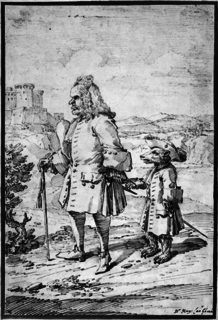 W
WA bear-leader was formerly a man who led bears about the country. In the Middle Ages and the Tudor period, these animals were chiefly used in the blood sport of bear-baiting and were led from village to village. Performing bears were also common; their keepers were generally Frenchmen or Italians.
 W
WBeauchamp Place is a fashionable shopping street in the Knightsbridge district of London. It was known as Grove Place until 1885.
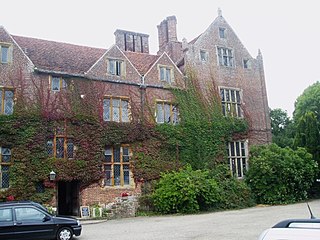 W
WBolebroke Castle is a 15th-century hunting lodge located north of the village of Hartfield, East Sussex, England. It is a grade II* listed building.
 W
WBorder reivers were raiders along the Anglo-Scottish border from the late 13th century to the beginning of the 17th century. Their ranks consisted of both Scottish and English people, and they raided the entire Border country without regard to their victims' nationality. Their heyday was in the last hundred years of their existence, during the time of the House of Stuart in the Kingdom of Scotland and the House of Tudor in the Kingdom of England.
 W
WCanonbury Tower is a Tudor tower in Canonbury, and is the oldest building in Islington, North London. It is the most substantial remaining part of what used to be Canonbury House, erected for the Canons of St Bartholomew's Priory between 1509 and 1532. The tower has been occupied by many historical figures, including Sir Francis Bacon and Oliver Goldsmith. It is a Grade II* listed building, and is located in Canonbury Place, 100 metres (330 ft) east of Canonbury Square.
 W
WGiovanni Battista Castiglione (1516–1598) was the Italian tutor of Princess Elizabeth I. It is speculated that he taught Prince Edward VI. A humanist reformer, he was imprisoned in the Tower of London in 1556 by Elizabeth's sister, Mary I. Suspected of sedition, he was tortured so severely that he was left permanently lame. Later, he carried Elizabeth's letters when she herself was imprisoned in the Tower.
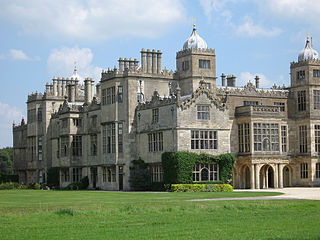 W
WCharlton Park is a country house and estate in Wiltshire, England, 2 miles (3.2 km) northeast of the town of Malmesbury. Charlton Park House is a Grade I listed building and a leading example of the prodigy house.
 W
WThe Chatham Chest was a fund set up in 1588 to pay pensions to disabled seamen from the Royal Navy. It was financed by regular deductions from seamen's pay, which were deposited in a chest held at Chatham Dockyard and disbursed upon proof of a sailor's disability. The fund ceased operation in 1803 when it was merged with an equivalent pension scheme run by Greenwich Hospital. The actual Chatham Chest has since been displayed at the National Maritime Museum in London and at The Mast House at Chatham Historic Dockyard.
 W
WCostessey Hall was a manor house in Costessey, Norfolk, England, four miles west of Norwich. The first mention of it dates to 1066, when William I gave it to Alan Rufus, Earl of Richmond. It was then described as Costessey Manor.
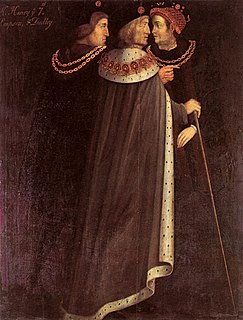 W
WThe Council Learned in the Law was a highly controversial tribunal of Henry VII of England's reign.
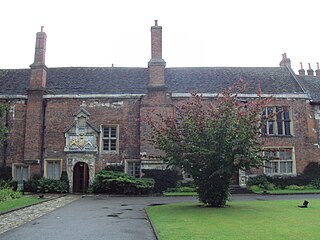 W
WThe Council of the North was an administrative body set up in 1472 by King Edward IV of England, the first Yorkist monarch to hold the Crown of England, to improve government control and economic prosperity, to benefit all of Northern England. Edward's brother, Richard, Duke of Gloucester was its first Lord President.
 W
WThe Court of the Council in the Dominion and Principality of Wales, and the Marches of the same, commonly called the Council of Wales and the Marches was a regional administrative body based in Ludlow Castle within the Kingdom of England between the 15th and 17th centuries, similar to the Council of the North. Its area of responsibility varied but generally covered all of modern Wales and the Welsh Marches of Shropshire, Herefordshire, Worcestershire, Cheshire and Gloucestershire/Bristol.
 W
WThe Coverdale Bible, compiled by Myles Coverdale and published in 1535, was the first complete Modern English translation of the Bible, and the first complete printed translation into English. The later editions published in 1537 were the first complete Bibles printed in England. The 1537 folio edition carried the royal licence and was therefore the first officially approved Bible translation in English. The Psalter from the Coverdale Bible was included in the Anglican Book of Common Prayer beginning in 1662, and in all editions of the Episcopal Book of Common Prayer until 1979.
 W
WBaron Dynham is a title which has been used twice in the English peerage, for:Oliver de Dynham, 1st Baron Dynham (c.1234-1299), of Hartland and Nutwell in Devon and feudal baron of Cardinham in Cornwall. He was summoned by writ of King Edward I to attend parliaments from 24 June 1295 to 26 August 1296, the writs being addressed to Olivero de Dynham or Dynaunt, by which he is held to have become Baron Dynham. The barony was not apparently hereditary, as determined in 1914 by the House of Lords Committee for Privileges concerning a claim to it made by Viscount Gage and Sir Robert Bourchier Sherard Wrey, Baronet. "[A]ny hereditary barony, that may be supposed to have been created by the writ of 1295, is in abeyance" among the representatives of the sisters of the baron who died in 1401. No writ of summons was ever issued to his descendants for five generations until 1467, when a new peerage was created. John Dynham, 1st Baron Dynham (c.1434-1501), summoned by writs of Kings Edward IV and Henry VII to attend parliaments from 28 February 1467 to 16 January 1497, the writs being addressed to Johanni Dynham de Care Dynham, by which he is held to have become Baron Dynham. The title became extinct following his death in 1501 without male progeny.
 W
WThe Elizabethan era is the epoch in the Tudor period of the history of England during the reign of Queen Elizabeth I (1558–1603). Historians often depict it as the golden age in English history. The symbol of Britannia was first used in 1572, and often thereafter, to mark the Elizabethan age as a renaissance that inspired national pride through classical ideals, international expansion, and naval triumph over Spain. The historian John Guy (1988) argues that "England was economically healthier, more expansive, and more optimistic under the Tudors" than at any time in a thousand years.
 W
WThe English Armada, also known as the Counter Armada or the Drake–Norris Expedition, was an attack fleet sent against Spain by Queen Elizabeth I of England in 1589, during the undeclared Anglo-Spanish War (1585–1604) and the Eighty Years' War. It was led by Sir Francis Drake as admiral and Sir John Norreys as general, and failed to drive home the advantage England had won upon the failure of the Spanish Armada in the previous year. The Spanish victory marked a revival of Philip II's naval power through the next decade.
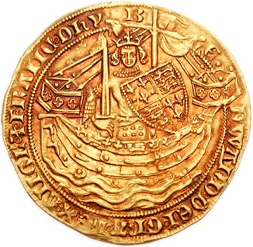 W
WThe silver three-farthing coin was introduced in Queen Elizabeth I's third and fourth coinages (1561–1582), as part of a plan to produce large quantities of coins of varying denominations and high metal content.
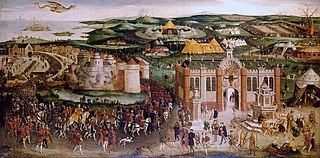 W
WThe Field of the Cloth of Gold was a royal summit meeting at a site in Balinghem – equidistant between Ardres in France and Guînes in the English Pale of Calais –. It was a lavish extremely expensive display of wealth on both sides from 7 to 24 June 1520, between King Henry VIII of England and King Francis I of France.
 W
WGong farmer was a term that entered use in Tudor England to describe someone who dug out and removed human excrement from privies and cesspits. The word "gong" was used for both a privy and its contents. As the work was considered unclean and off-putting to the public, gong farmers were only allowed to work at night, hence they were sometimes known as nightmen. The waste they collected, known as night soil, had to be taken outside the city or town boundary or to official dumps for disposal.
 W
WGravelines is a commune in the Nord department in Northern France. It lies at the mouth of the river Aa 15 miles (24 km) southwest of Dunkirk. It was formed in the 12th century around the mouth of a canal built to connect Saint-Omer with the sea. As it was on the western borders of Spanish territory in Flanders it became heavily fortified, some of which still remains.
 W
WThe Great Bible of 1539 was the first authorised edition of the Bible in English, authorised by King Henry VIII of England to be read aloud in the church services of the Church of England. The Great Bible was prepared by Myles Coverdale, working under commission of Thomas, Lord Cromwell, Secretary to Henry VIII and Vicar General. In 1538, Cromwell directed the clergy to provide "one book of the Bible of the largest volume in English, and the same set up in some convenient place within the said church that ye have care of, whereas your parishioners may most commodiously resort to the same and read it."
 W
WGreenwich armour is the plate armour in a distinctively English style produced by the Royal Almain Armoury founded by Henry VIII in 1511 in Greenwich near London, which continued until the English Civil War. The armoury was formed by imported master armourers hired by Henry VIII, initially including some from Italy and Flanders, as well as the Germans who dominated during most of the 16th century. The most notable head armourer of the Greenwich workshop was Jacob Halder, who was master workman of the armoury from 1576 to 1607. This was the peak period of the armoury's production and it coincided with the elaborately gilded and sometimes coloured decorated styles of late Tudor England.
 W
WLucas Horenbout, often called Hornebolte in England (c.1490/1495–1544), was a Flemish artist who moved to England in the mid-1520s and worked there as "King's Painter" and court miniaturist to King Henry VIII from 1525 until his death. He was trained in the final phase of Netherlandish illuminated manuscript painting, in which his father Gerard was an important figure, and was the founding painter of the long and distinct English tradition of portrait miniature painting. He has been suggested as the Master of the Cast Shadow Workshop, who produced royal portraits on panel in the 1520s or 1530s.
 W
WThis is a list of Acts of the Parliament of England for the years 1485–1601.
 W
WThe Marprelate Controversy was a war of pamphlets waged in England and Wales in 1588 and 1589, between a puritan writer who employed the pseudonym Martin Marprelate, and defenders of the Church of England which remained an established church.
 W
WMinster Lovell Hall is a ruin in Minster Lovell, an English village in the Oxfordshire Cotswolds. The ruins are situated by the River Windrush.
 W
WThe Tudor navy was the navy of the Kingdom of England under the ruling Tudor dynasty (1485–1603). The period involved important and critical changes that led to the establishment of a permanent navy and laid the foundations for the future Royal Navy.
 W
WPackwood House is a timber-framed Tudor manor house near Lapworth, Warwickshire. Owned by the National Trust since 1941, the house is a Grade I listed building. It has a wealth of tapestries and fine furniture, and is known for the garden of yews.
 W
WThe History of the English penny from 1485 to 1603 covers the period of the Tudor dynasty.
 W
WPlantations in 16th- and 17th-century Ireland involved the confiscation of Irish-owned land by the English Crown and the colonisation of this land with settlers from Great Britain. The Crown saw the plantations as a means of controlling, anglicising and 'civilising' parts of Ireland. The main plantations took place from the 1550s to the 1620s, the biggest of which was the plantation of Ulster. The plantations led to the founding of many towns, demographic and economic changes, changes in land ownership and the landscape, and also to ethnic and sectarian conflict. They took place before and during the earliest English colonisation of the Americas.
 W
WThe 1552 Act for the Provision and Relief of the Poor was a statute passed by the Parliament of England during the reign of King Edward VI. It is a part of the Tudor Poor Laws and reaffirms previous poor laws enacted in 1536, 1547, and 1549 which focused primarily on the punishment of vagabonds. The Poor Act of 1552 designated a new position, "collector of alms," in each parish. Local authorities and residents elected two alms collectors to request, record, and distribute charitable donations for poor relief. It further provided that each parish would keep a register of all its “impotent, aged, and needy persons” and the aid they received. Parish authorities were directed to “gently exhort” any person that could contribute but would not, referring them to the Bishop of the Diocese if they continued to refuse. Punishment for neglecting poor relief obligations was adopted in 1563 and reliance on charity was replaced by a system of taxation in 1597. Under the assumption that all poor would be cared for, begging openly was now forbidden. Licensed begging would be reinstated by the Marian Parliament of 1555 with the requirement that legal beggars wear badges.
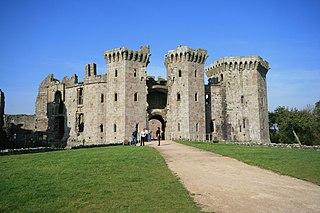 W
WRaglan Castle is a late medieval castle located just north of the village of Raglan in the county of Monmouthshire in south east Wales. The modern castle dates from between the 15th and early 17th centuries, when the successive ruling families of the Herberts and the Somersets created a luxurious, fortified castle, complete with a large hexagonal keep, known as the Great Tower or the Yellow Tower of Gwent. Surrounded by parkland, water gardens and terraces, the castle was considered by contemporaries to be the equal of any other in England or Wales.
 W
WThe Renaissance in Scotland was a cultural, intellectual and artistic movement in Scotland, from the late fifteenth century to the beginning of the seventeenth century. It is associated with the pan-European Renaissance that is usually regarded as beginning in Italy in the late fourteenth century and reaching northern Europe as a Northern Renaissance in the fifteenth century. It involved an attempt to revive the principles of the classical era, including humanism, a spirit of scholarly enquiry, scepticism, and concepts of balance and proportion. Since the twentieth century, the uniqueness and unity of the Renaissance has been challenged by historians, but significant changes in Scotland can be seen to have taken place in education, intellectual life, literature, art, architecture, music, science and politics.
 W
WRochford Hall is a manor in Rochford, Essex, England. During the reign of King Henry VIII, it belonged to Thomas Boleyn, who was then Viscount Rochford, and it was the marital home of his daughter Mary Boleyn, sister of Anne Boleyn, and Mary's second husband, Sir William Stafford. It is now privately owned by Rochford Hundred Golf Club where it acts as the clubhouse and is a Grade I listed building.
 W
WRye House near Hoddesdon in Hertfordshire is a former fortified manor house, located in what is now the Lee Valley Regional Park. The gatehouse is the only surviving part of the structure and is a Grade I listed building. The house gave its name to the Rye House Plot, an assassination attempt of 1683 that was a violent consequence of the Exclusion Crisis in British politics at the end of the 1670s.
 W
WSecretary hand is a style of European handwriting developed in the early sixteenth century that remained common in the sixteenth and seventeenth centuries for writing English, German, Welsh and Gaelic.
 W
WThe Spanish Armada was a Habsburg Spanish fleet of 130 ships that sailed from Corunna in late May 1588, under the command of the Duke of Medina Sidonia, with the purpose of escorting an army from Flanders to invade England. Medina Sidonia was an aristocrat without naval command experience but was made commander by King Philip II. The aim was to overthrow Queen Elizabeth I and her establishment of Protestantism in England, to stop English interference in the Spanish Netherlands and to stop the harm caused by English and Dutch privateering ships that interfered with Spanish interests in the Americas.
 W
WThe 2nd Spanish Armada also known as the Spanish Armada of 1596 was a naval operation that took place during the Anglo–Spanish War. Another invasion of England or Ireland was attempted in the autumn of 1596 by King Philip II of Spain. In an attempt at revenge for the English sack of Cadiz in 1596, Philip immediately ordered a counter strike in the hope of assisting the Irish rebels in rebellion against the English crown. The strategy was to open a new front in the war, forcing English troops away from France and the Netherlands, where they were also fighting.
 W
WThe 3rd Spanish Armada, also known as the Spanish Armada of 1597, was a major naval event that took place between October and November 1597 as part of the Anglo–Spanish War. The armada, which was the third attempt by Spain to invade or raid the British Isles during the war, was ordered by King Philip II of Spain in revenge for the English attack on Cadiz following the failure of the 2nd Spanish Armada the previous year due to a storm. The Armada was executed by the Adelantado, Martín de Padilla, who was hoping to intercept and destroy the English fleet under Robert Devereux the 2nd Earl of Essex as it returned from the failed Azores expedition. When this was achieved, the Armada would go on to capture either the important port of Falmouth or Milford Haven and use those places as a base for invasion.
 W
WThe Spanish Company was an English chartered company or corporate body established in 1530, and 1577, confirmed in 1604, and re-established in 1605 as President, Assistants and Fellowship of Merchants of England trading into Spain and Portugal, whose purpose was the facilitation and control of English trade between England and Spain through the establishment of a corporate monopoly of approved merchants.
 W
WThe Speech to the Troops at Tilbury was delivered on 9 August Old Style 1588 by Queen Elizabeth I of England to the land forces earlier assembled at Tilbury in Essex in preparation for repelling the expected invasion by the Spanish Armada.
 W
WStansted or Steanstead Hall was the country seat of the Earls of Essex during the reign of Henry VIII of England.
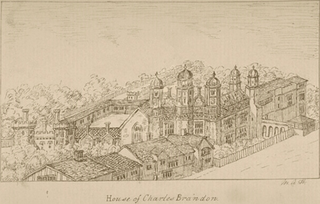 W
WSuffolk Place was a mansion house located on the west side of Borough High Street in Southwark, Surrey, on the south bank of the River Thames opposite the City of London. It was the London town house of the Dukes of Suffolk, and was located near Winchester Palace, London seat of the Bishop of Winchester. The position was highly prominent as Borough High Street was the principal thoroughfare leading from London Bridge and the City of London, to Canterbury and Dover, a route used by monarchs and others, including the pilgrims in Chaucer's Pilgrim's Progress. It was built in the fifteenth century and rebuilt in fine Renaissance style in 1522 by Charles Brandon, 1st Duke of Suffolk (c.1484-1545) a favourite of King Henry VIII. On 4 February 1536 it was taken over by King Henry VIII who exchanged it with Brandon for Norwich Place on the Strand, on the north side of the Thames, nearer to the Palace of Westminster.
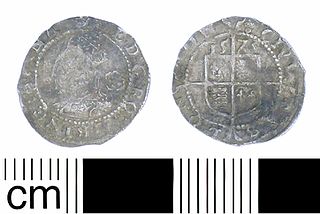 W
WThe English three halfpence, a silver coin worth 1 1⁄2d, was introduced in Elizabeth I of England's third and fourth coinages (1561–1582) as part of a plan to produce large quantities of coins of varying denominations and high silver content. The obverse shows a left-facing bust of the queen, with a rose behind her, with the legend E D G ROSA SINE SPINA – Elizabeth by the grace of God a rose without a thorn – while the reverse shows the royal arms with the date above the arms and a mintmark at the beginning of the legend CIVITAS LONDON – City of London, the Tower Mint.
 W
WThe Tudor conquest of Ireland took place under the Tudor dynasty, which held the Kingdom of England during the 16th century. Following a failed rebellion against the crown by Silken Thomas, the Earl of Kildare, in the 1530s, Henry VIII was declared King of Ireland in 1542 by statute of the Parliament of Ireland, with the aim of restoring such central authority as had been lost throughout the country during the previous two centuries. Several people who helped establish the Plantations of Ireland also played a part later in the early colonisation of North America, particularly a group known as the West Country men
 W
WA Tudor money box is a glazed earthenware container used in late Medieval Britain as a small, portable bank for collecting and saving money. The typical money box was a round, sealed, green-glazed pot with a vertical coin slot. These sturdy, small pots were commonly used by Elizabethan theatres to collect ticket earnings. Money would be retrieved from the full money box by breaking it open and destroying the pot.
 W
WThe Tyndale Bible generally refers to the body of biblical translations by William Tyndale. Tyndale's Bible is credited with being the first English translation to work directly from Hebrew and Greek texts. Furthermore, it was the first English biblical translation that was mass-produced as a result of new advances in the art of printing.
 W
WWesthorpe Hall was a manor house in Westhorpe, Suffolk, England.
 W
WMeynnart Wewyck or Maynard Vewicke was a Netherlandish painter, active ca. 1502-1525 in England. Wewyck was employed as an artist at the court of Henry VII of England and, after his death, by his son Henry VIII. He also spent a brief period at the court of James IV of Scotland. Surviving documentation associates Wewyck with portraits of several members of the royal family, and with drawings for the tomb of Lady Margaret Beaufort, mother of Henry VII, at Westminster Abbey. New research published in 2019 has identified a portrait of Lady Margaret Beaufort in the Master's Lodge at St John's College, Cambridge as by Wewyck, and also attributes a painting of Henry VII at the Society of Antiquaries of London to his hand. In follow-on work, a group of researchers suggests that four surviving portraits of Henry VIII and two of his mother, Elizabeth of York, should also be attributed to Wewyck.